What began as a dream in 1872 now remains a living monument to perseverance, faith and community. The history of the church of Our Lady of the Sacred Heart is the story of the generations who built it.
A short video about Our History
History
The Sacro Cuor Parish Church in Sliema is a cornerstone of spiritual life and architectural beauty, with roots dating back to the late 19th century.
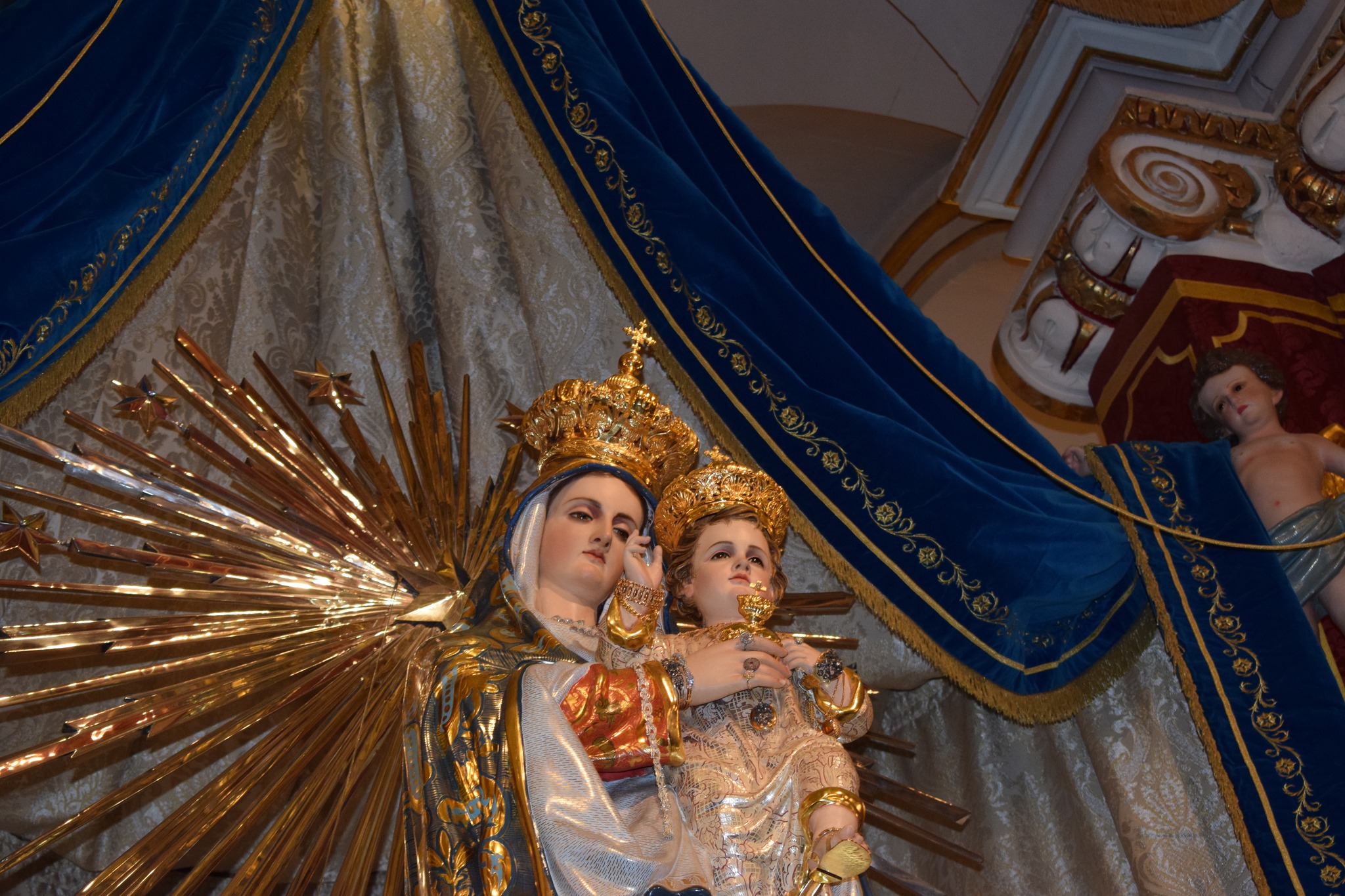
Origins and Construction
(1872–1881)
The initiative to build the church was led by Fr. Paul Vella from Valletta, who, around 1874, recognized the need for a new church to serve Sliema’s growing Catholic community. He formed a committee with local figures, including Pietru Pawl Galea and Giacchino Ellul, to raise funds and oversee the project. Architect Giovanni Domenico Debono designed the church in a Roman-Ionic style. The foundation stone was laid on June 3, 1877, coinciding with the 50th anniversary of Pope Pius IX’s episcopal ordination, to whom the church was dedicated as a national monument.
Construction faced challenges, notably on October 22, 1879, when one of the main pillars cracked due to the use of soft globigerina limestone. The affected pillars were rebuilt using harder Coralline limestone. The church was completed and blessed on June 26, 1881, by Archbishop Carmelo Scicluna. That evening, the statue of Our Lady of the Sacred Heart, crafted by Maltese sculptor Ġlormu Darmanin, was brought into the church.
Transition to Franciscan Administration and Parish Status
On November 13, 1881, the church was entrusted to the Franciscan Friars Minor. Fr. Anton M. Cesal, the provincial superior, appointed Fr. Aegidius Portelli as rector. The church became a parish on September 24, 1918, as declared by Archbishop Mauro Caruana.
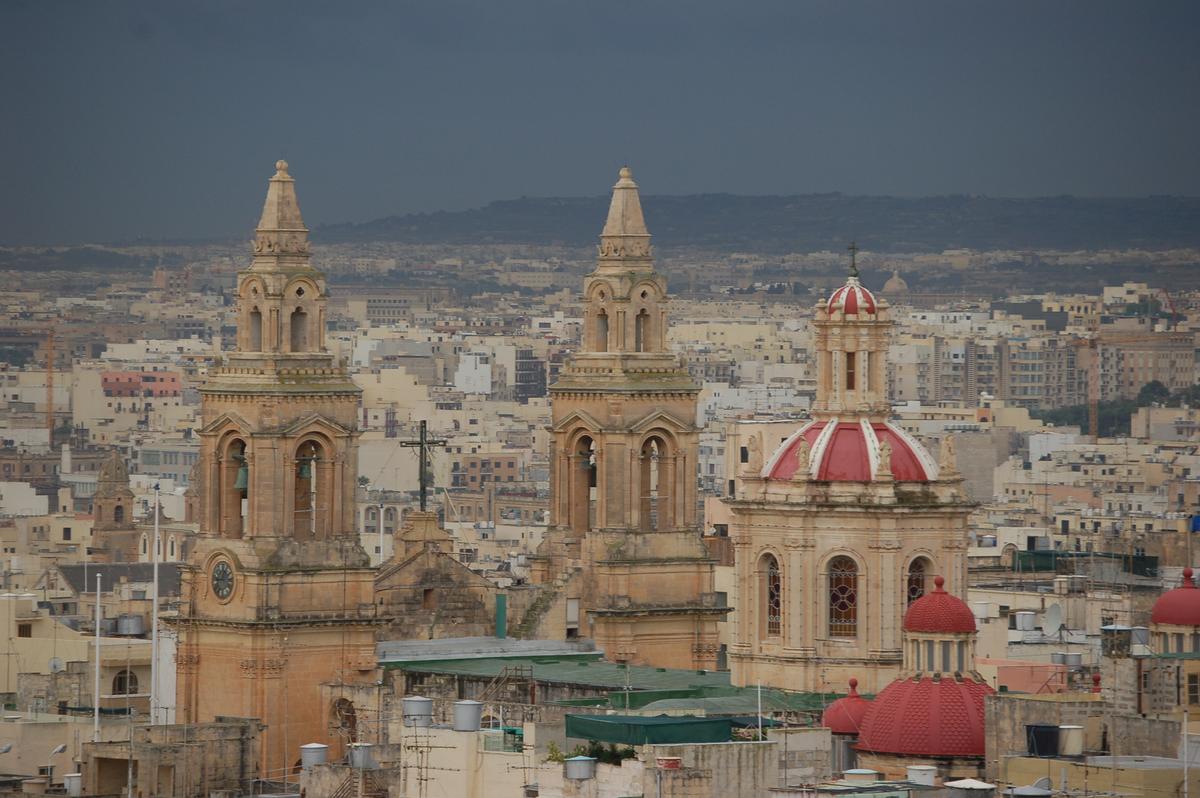
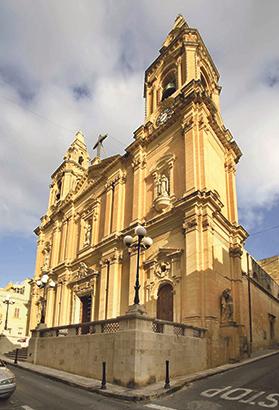
World War II and Restoration
During World War II, the Church suffered extensive damage. Between 3 and 4 August 1941, during an enemy attack, bombardments struck various parts of the church, including the sacristy. Many items were lost, among them church scaffolding, a set of chandeliers that had only been installed for the 1940 feast, liturgical vestments, and other important furnishings. In the same attack, the statue of St. Paschal Baylon was destroyed. It had been removed from its niche to make space for the statue of Our Lady of the Sacred Heart.
The greatest tragedy for the monks and parishioners occurred on April 1, 1942. During an intense air raid, a large number of bombs were dropped around the church, completely destroying the houses to its left. The chapel of Our Lady of Pompeii was hit directly and completely destroyed, while the chapel of St. Lawrence suffered severe damage. At the time, P. George Xerri OFM was in the chapel with three women and a young girl. Tragically, two of the women and the girl lost their lives in the wreckage. P. George Xerri OFM and the remaining woman were rescued alive.
The bombing also devastated the convent, which was entirely destroyed. Twenty-two people, including P. Diegu Galdes OFM, were killed. Among the survivors was P. Lino Mamo OFM.
Reconstruction efforts began in 1943, following the war. The chapel of St. Lawrence was dismantled and rebuilt, including its apse, and the chapel of Our Lady of Pompeii was also reconstructed. The restoration was completed by 1944. Finally, on November 30, 1950, the Church was consecrated by Archbishop Michael Gonzi.
Artistic Developments
Between 1954 and 1978, the church underwent major improvements. The floor was covered with marble paving, and the roof was gilded. Since the cradle held by the titular statue had been destroyed during the war, a new one was crafted by Joseph Galea from Luqa. This work, made of African nuts and bronze, was based on a design by Carmelo Tonna from Rabat.
Inside the Church of Our Lady of the Sacred Heart, there are nine altarpieces, all adorned with artistic panels created by various artists. Among these are the panels of St. Lawrence (1881), St. Vincent Ferreri (1881), Our Lady of Mount Carmel (1897), and St. John (1881), with the latter considered the artist’s masterpiece.
The panel of St. Anthony of Padua (1881) was painted by Lazzru Pisani, while the panel of St. Francis was painted by Francesco Zahra. The panel of the Sacred Heart of Jesus was created by the Franciscan Sisters of Mary in Rome in 1937. The altar of St. Paschal was completed in 1956.
Additionally, there is a panel by Giuseppe Calì depicting St. Peter and St. Paul in prison, as well as a panel of St. Charles of Sezze with St. Anne, painted by Oscar Testa.
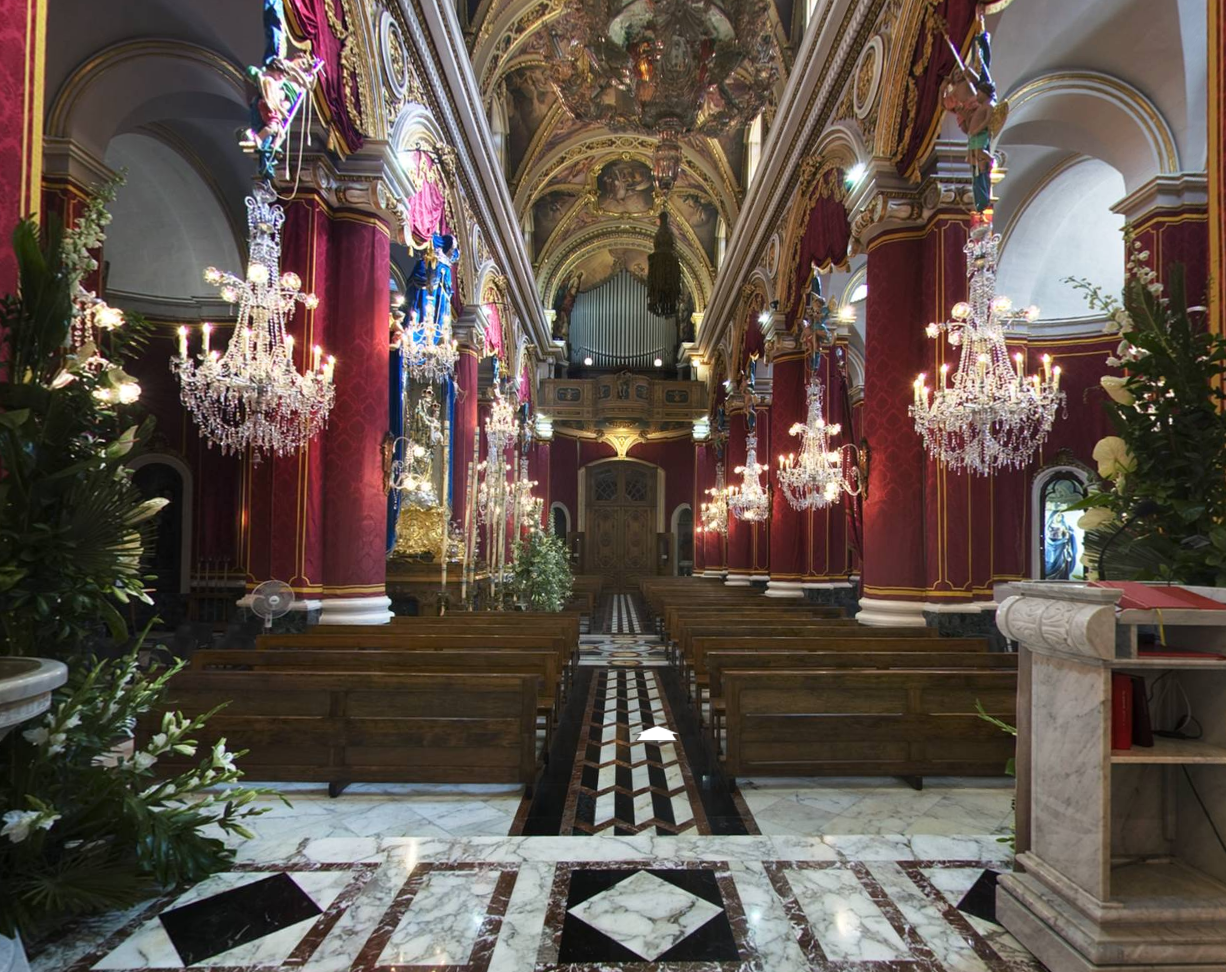
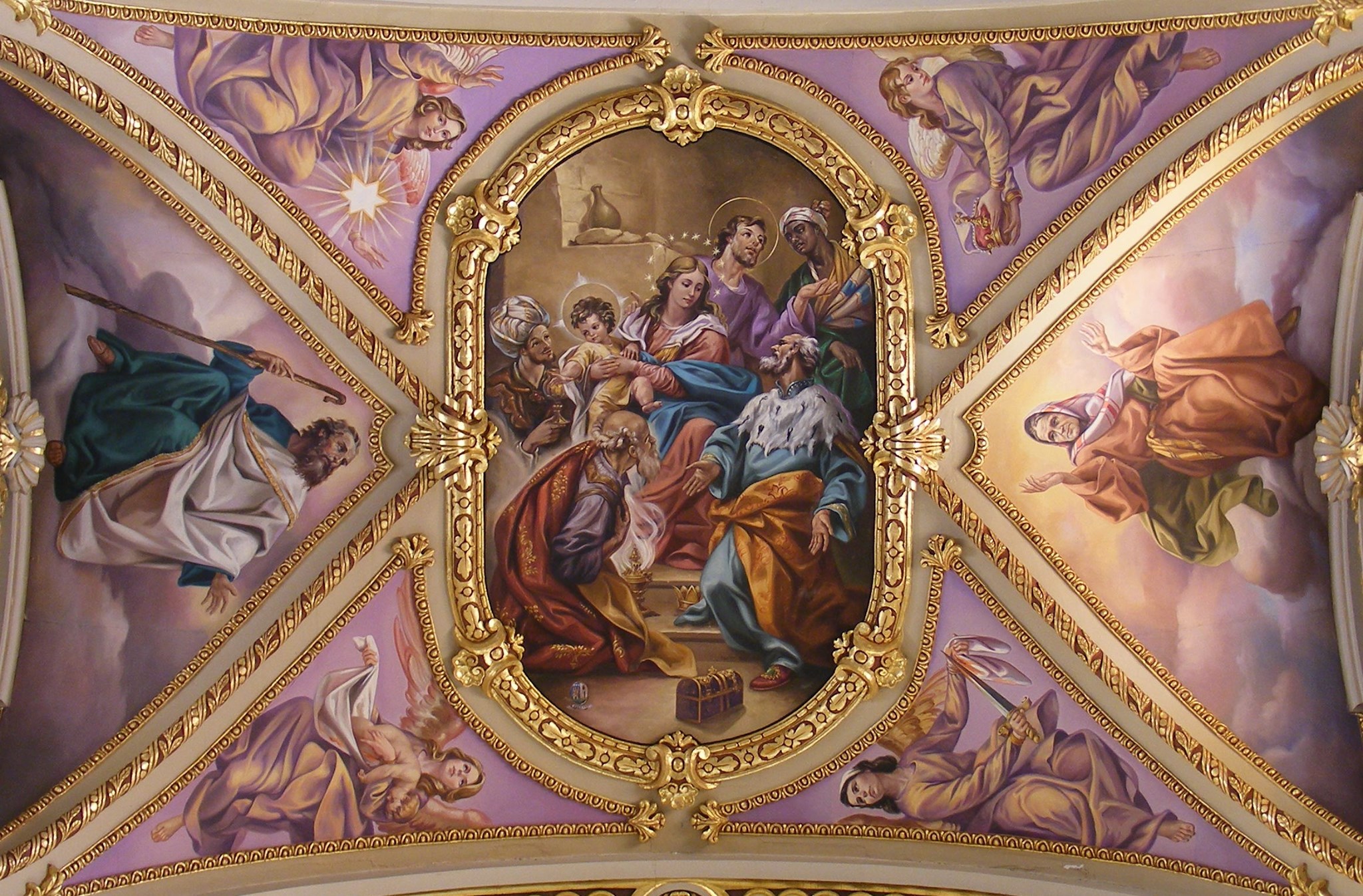
The High Altar
The first titular painting was created by Giuseppe Bonnici. It depicted Our Lady standing and carrying the Child on her shoulder, with His Divine Heart visible on His chest. However, this painting was not very successful, as it began to lose its colour over time. In 1933, a new painting was commissioned from the Franciscan Sisters of Mary in Rome and was completed in 1936.
This new artwork portrays Our Lady seated on a throne resting on clouds and surrounded by small flying angels. On her lap sits the Child Jesus, who points to His Heart with His left hand while blessing with His right. Both Our Lady and the Child wear crowns on their heads. Below the throne is a depiction of Sliema as it appeared at the time, reflecting the town over which Our Lady is patroness.
The Dome
After the dome was painted, the Franciscan community commissioned Cavalier Pawlu Camilleri Cauchi to paint the ceiling of the church, as his style closely resembled that of Giuseppe Calì. Inside the dome, there are paintings of eight Franciscan saints: Saint John Capistran, OFM; Saint Benedict the Moor, OFM; Saint Nicholas Pieck, OFM; Saint Leonard of Port Maurice, OFM; Saint Francis Solanus, OFM; Saint Peter of Alcantara, OFM; Saint Peter Baptist, OFM; and Saint Louis, OFM.
Beneath the dome, there are four lunettes representing the four Doctors of the Church: Doctor Saint Anthony of Padua, Doctor John Duns Scotus, Doctor Saint Bernardine of Siena, and a Doctor dressed as a Cardinal.
On the main altar, in the apse, there is a fresco depicting the Triumph of the Privilege of the Immaculate Conception of Our Lady, painted by the renowned artist Giuseppe Calì in 1892. This work was completed in 22 days, as recorded in an inscription on its right-hand side. On the ceiling of the choir, we find the Seventh Mystery of the Franciscan Crown, depicting the Assumption of the Blessed Virgin Mary into Heaven. On either side of this painting are Saint Joseph and Saint John the Baptist. This work was completed in 1971.


The Chapels & Mysteries
In the Chapel of Saint Joseph, the main painting depicts the Sixth Mystery of the Franciscan Crown, showing the moment when the Risen Christ appears to His Mother Mary. In the apse above this same chapel, there is a triptych apse titled “Mary, Mother of the Church.” In the centre, Our Lady is shown presenting Saint Peter the Apostle and the image of a priest. On the sides are the four evangelists, and on the other side are several Doctors of the Church. This was completed in 1972.
In the Chapel of Saint Lawrence, the main painting depicts the Fifth Mystery of the Franciscan Crown, the finding of the Child Jesus in the Temple. In the apse above this chapel, there is a triptych apse titled “Madonna, Queen of All Creation.” In the centre are Our Lady and Adam and Eve, on the sides are the seven choirs of angels, and on the other side the fallen angels are shown being cast out of Heaven by Archangel Saint Michael. This was completed in 1973.
Work then began on the ceiling of the nave, which depicts the Fourth Mystery of the Franciscan Crown: the Adoration of the Magi. Beside the main painting are the Prophetess Anna and the Prophet Simeon. In the panels beside the windows, four Franciscan saints from the Second and Third Orders are depicted: Saint Louis IX, King of France; Saint Elizabeth of Hungary; Saint Clare of Assisi; and Saint Ivo. This was completed in 1974.
The Third Mystery of the Franciscan Crown depicts the Nativity of Jesus in Bethlehem. Beside the painting, we find King David and Ruth. In the panels beside the windows, there are depictions of Saint Rose of Viterbo, Saint Roch, Saint Charles Borromeo (Cardinal and Franciscan Tertiary), and Saint Colette of Corbie. This was completed in 1975.
The Second Mystery depicts the Visitation of Our Lady to Saint Elizabeth. Beside the painting are the Prophet Isaiah and Sarah. In the window panels, we see Saint Agnes of Assisi, Saint John Mary Vianney, Pope Pius X, and Saint Margaret of Cortona. This was completed in 1976.
The First Mystery depicts the Annunciation of the Archangel Gabriel to Our Lady. Beside the painting are Saint Anne and Saint Joachim. In the panels beside the windows, there are depictions of Saint Catherine of Bologna, Blessed Contardo Ferrini, Blessed Ermelina Maria (a Franciscan Sister), and Saint Paul Suzuki. This was completed in 1977.
In the apse above the organ, there is a painting of the Wedding at Cana, the first miracle performed by Jesus. This was completed in 1979.
The Pulpit & Altar
The church is also adorned with other artistic works, including a pulpit built in 1936 by the craftsman Alfredo Zarb from Sliema, made of walnut and cypress wood based on a design by Anġlu Muscat from Rabat. The pulpit rests on two steps, on which stand two bronze lions that give the impression of bearing the pulpit’s weight. Four cypress wood columns rise from there, each ending with symbolic figures of the Evangelists. These support the pulpit gallery, which is surrounded by three bronze bas-relief panels: in the centre, Christ preaching to the people, and on either side, Saint Francis preaching to the birds and Saint Anthony preaching to the fish. On the back of the pulpit is the figure of Faith, holding a Cross and a chalice, and at the top is an angel blowing a trumpet.
There is also the freestanding altar table, which was made after the original high altar was removed from the centre to comply with the directives of the Second Vatican Council. This altar table was consecrated by Archbishop Mikiel Gonzi on 14 June 1974.


The Statues
Apart from the titular statue, the church is decorated with various other statues, including Saint Paschal Baylon; Our Lady of Fatima; Our Lady of Lourdes (the work of Wistin Camilleri); Our Lady of Sorrows; Saint John; and the Crucifix (works from Lecce), as well as the Ecce Homo. There are also statues of Saint Joseph, Saint Clare (by Pawlu Aquilina), Saint Francis (by Michael Camilleri Cauchi), the Redeemer (by Renzo Gauci), and Our Lady of Sorrows (by Pawlu Aquilina). During Holy Week, the church is adorned with a set of Passion statues crafted by various artists, including Andrew Bugeja and Pawlu Aquilina.
The Organ Gallery
The gallery housing the organ was constructed in wood after the new church façade was built, following 1936. It contains an organ built by the firm Balbiani Vegezzi Bozzi of Milan. Over the years, maintenance work was carried out on it. In 2018, the organ was restored and began to be played from below using a different amplification system.
On the pilasters of the side altars, there is a Via Sagra (Stations of the Cross) that was made in Italy. In 1991, its frames were replaced with marble ones by Mr. Ronald Pisani.


The Niche of Our Lady of the Sacred Heart
The statue of Our Lady of the Sacred Heart did not have a single niche; it was kept in five different niches within the church over time. When the church was enlarged in 1936, it was decided that one of the chapels would be converted into a permanent niche for the statue, where it could be placed along with its pedestal and base.
The construction of this niche began in 1969 and continued until April 1970, when the statue of Our Lady of the Sacred Heart was installed in its new niche. The niche is decorated both inside and outside with ornamentation designed and executed by Anthony Cuschieri.
Recent Restorations and Celebrations
Over the years, the church has undergone extensive restoration. Significant work was carried out on the dome, including the restoration of the eight statues surrounding it, as well as on the façade and the bell tower. Modern electrical and sound systems were installed, and the entire church was repainted. Several columns at the back of the church were also replaced due to damage caused by their lower position below road level. The roof’s membrane was renewed, and the domes—including the one at the back of the church—were fully repainted.
The parish remains active throughout the entire year, not only during the titular feast celebrated on the first Sunday of July. In October, the parish also celebrates the feast of St. Francis, patron of the Franciscan Order, who administers the parish. During Holy Week, a procession of sorrows and a pilgrimage with the statue of Jesus the Redeemer are held. Inside the church, a series of Passion scenes are displayed, representing the Garden of Gethsemane, Jesus tied to the column, Ecce Homo, the Redeemer, Veronica, the Great Virgin, the Mourning, and the Dead Christ. At Easter, a statue of the Risen Christ by Renzo Gauci is set up inside the church. Additionally, processions for Corpus Christi and the Sacred Heart of Jesus are also held annually.
